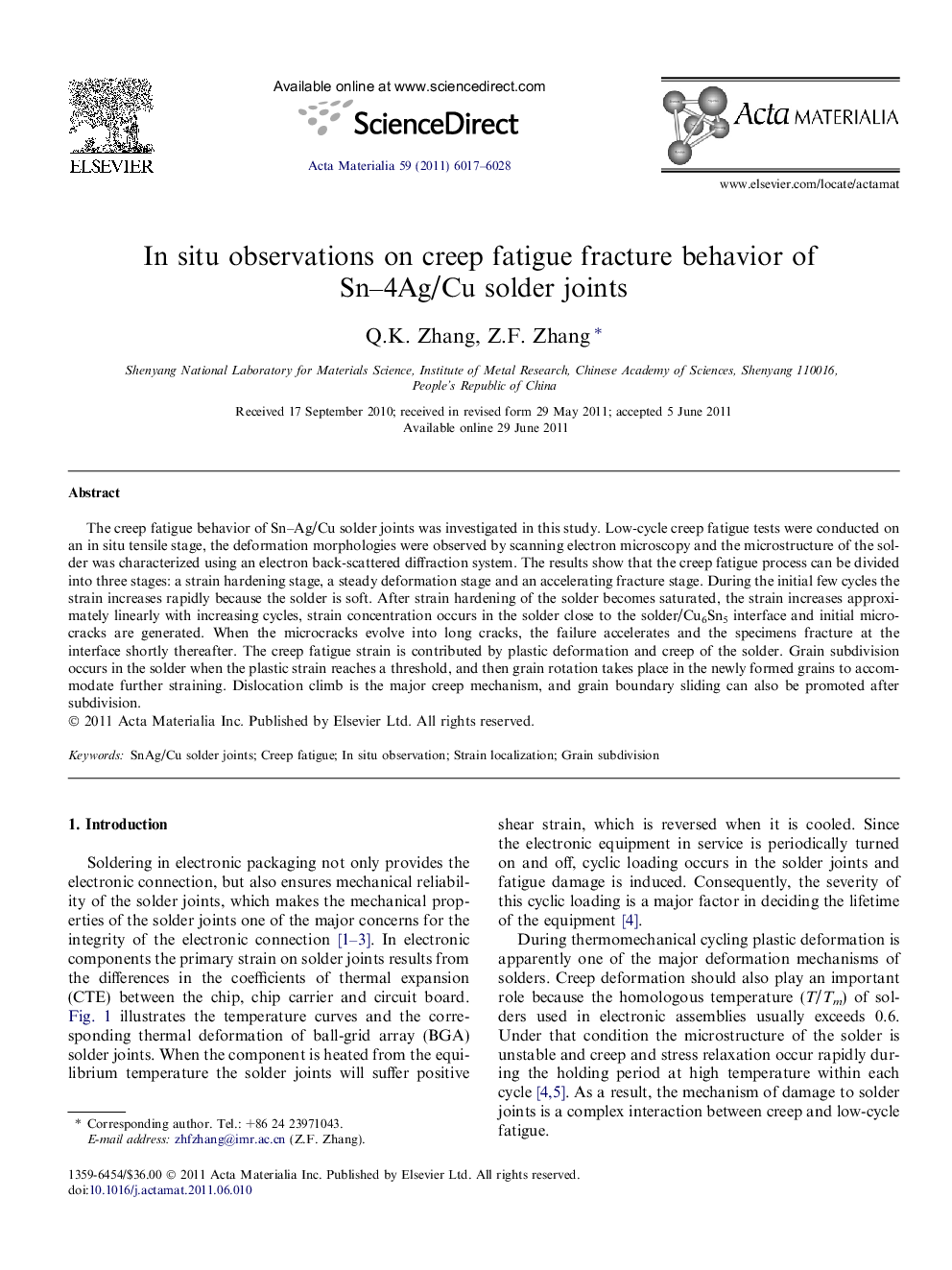| Article ID | Journal | Published Year | Pages | File Type |
|---|---|---|---|---|
| 1447470 | Acta Materialia | 2011 | 12 Pages |
The creep fatigue behavior of Sn–Ag/Cu solder joints was investigated in this study. Low-cycle creep fatigue tests were conducted on an in situ tensile stage, the deformation morphologies were observed by scanning electron microscopy and the microstructure of the solder was characterized using an electron back-scattered diffraction system. The results show that the creep fatigue process can be divided into three stages: a strain hardening stage, a steady deformation stage and an accelerating fracture stage. During the initial few cycles the strain increases rapidly because the solder is soft. After strain hardening of the solder becomes saturated, the strain increases approximately linearly with increasing cycles, strain concentration occurs in the solder close to the solder/Cu6Sn5 interface and initial microcracks are generated. When the microcracks evolve into long cracks, the failure accelerates and the specimens fracture at the interface shortly thereafter. The creep fatigue strain is contributed by plastic deformation and creep of the solder. Grain subdivision occurs in the solder when the plastic strain reaches a threshold, and then grain rotation takes place in the newly formed grains to accommodate further straining. Dislocation climb is the major creep mechanism, and grain boundary sliding can also be promoted after subdivision.
